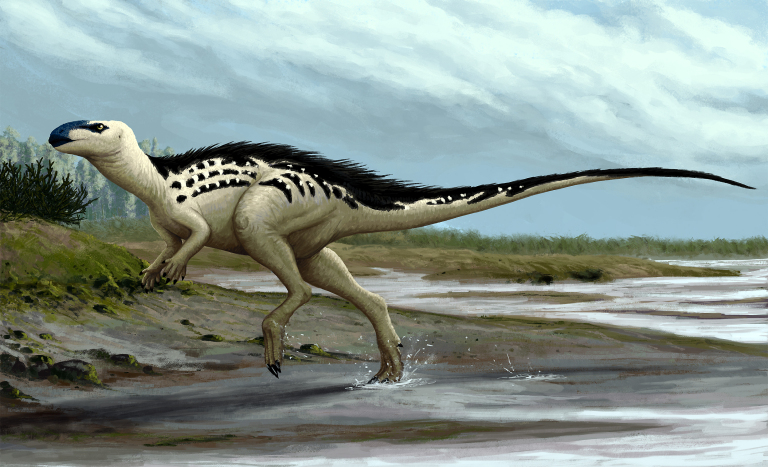Very Rare Dinosaur Fossil Find in Oregon
An Oregon Ornithopod
There may be many famous dinosaurs known from the United States of America, after all, when it comes to naming dinosaurs, Tyrannosaurus rex, Stegosaurus and Triceratops tend to trip off the tongue, but America’s dinosaur fossil heritage is not uniform across the whole country. Several parts of the U.S. have no record of dinosaur discoveries, and numerous others have a very fragmentary record when it comes to the preserved remains of Dinosauria. Oregon, the ninth largest State in terms of area, has a very poor dinosaur fossil record, however, a newly described fossil discovery made in the eastern part of the “Beaver State”, has got palaeontologists quite excited about the prospect of more dinosaur fossil finds being made.
The Toe Bone from a Dinosaur (Ornithopoda)
Writing in the “Journal of Vertebrate Palaeontology”, scientists from the University of Oregon in collaboration with the University of Calgary (Canada), have published a paper on the discovery of a single toe bone from a plant-eating dinosaur – an extremely rare find considering that this part of north-western North America was underwater throughout most of the Mesozoic Era.
Various Views of the Single Dinosaur Toe Bone (Pedal Phalanx)
Picture credit: University of Oregon
The fossil bone was found by University of Oregon Earth Sciences Professor Greg Retallack during field work in 2015, near the town of Mitchell (Wheeler County, eastern Oregon). The single bone was spotted amongst mollusc fossils exposed on a slope consisting of marine shale. The fossil dates from the Albian fauna stage of the Cretaceous and is the first ever Oregon dinosaur fossil to be the subject of a paper in a peer-reviewed scientific journal. Furthermore, it represents the first dinosaur fossil find from Oregon from strata not regarded as Upper Cretaceous.
Oregon might be bigger than the whole of the United Kingdom, but the Mesozoic-aged exposures represent marine sediments, that harbour very few remains of ancient terrestrial animals.
Greg Retallack stated:
“Oregon landscapes are rich with Cretaceous rocks, but they rarely contain the kinds of dinosaur remains we see elsewhere in the United States. The rocks here are the right age but are mostly from under the sea where dinosaurs did not live or from swamps where dinosaur bones are seldom preserved.”
Not Able to Assign a Genus
Although, identified as a dinosaur bone (pedal phalanx), it is not possible to assign it to a specific species or genus, although the research team are confident that it came from a plant-eating ornithopod dinosaur.
An Illustration of a Typical Ornithopod Dinosaur

Picture credit: Edyta Felcyn
Co-author of the paper, Edward Davis (University of Oregon), explained that the remains of a terrestrial animal ended up in the mollusc bed, after having been swept out to sea.
He explained:
“It’s a phenomenon we sometimes call “bloat and float”. That is, the animal died on shore in its terrestrial habitat, then was washed out to sea, where it floated while bloated with decomposition gasses. Eventually it burst, and only this toe bone was entombed and became a fossil.”
A Sizeable Plant-eating Dinosaur
Although very little taxonomic information can be gained from a single, isolated toe bone, a size comparison with much more complete and better known Cretaceous ornithopods such as Tenontosaurus, suggests that this dinosaur may have been about six to seven metres long and weighed around a tonne.
A spokesperson from Everything Dinosaur commented:
“Although such a fossil find in marine sediments is exceptionally rare, it just goes to show that dinosaurs fossils can be found and if there is one, then there may be more. Many of the Mesozoic-aged rocks in this part of Oregon represent near coastal marine deposits. Given that dinosaurs would have roamed the land close to the sea for millions of years it is possible that more dinosaur remains might be found.”
To read an article published by Everything Dinosaur in 2015, which looks at which part of the United States are not associated with dinosaur fossils: Washington State the 37th U.S. State with a Dinosaur.
Visit the Everything Dinosaur website: Everything Dinosaur.


